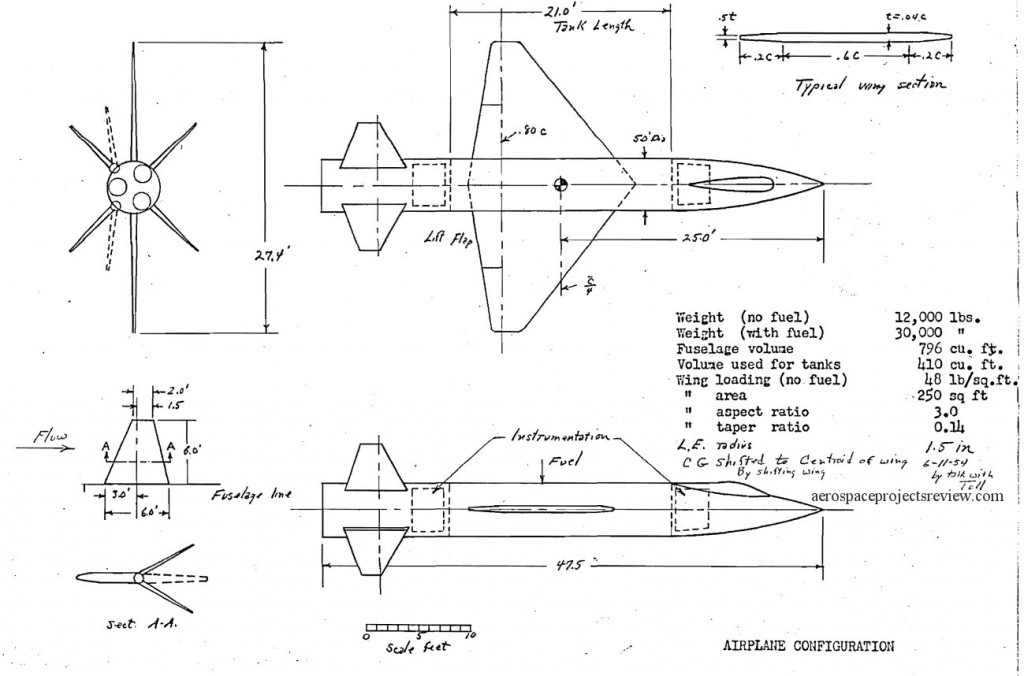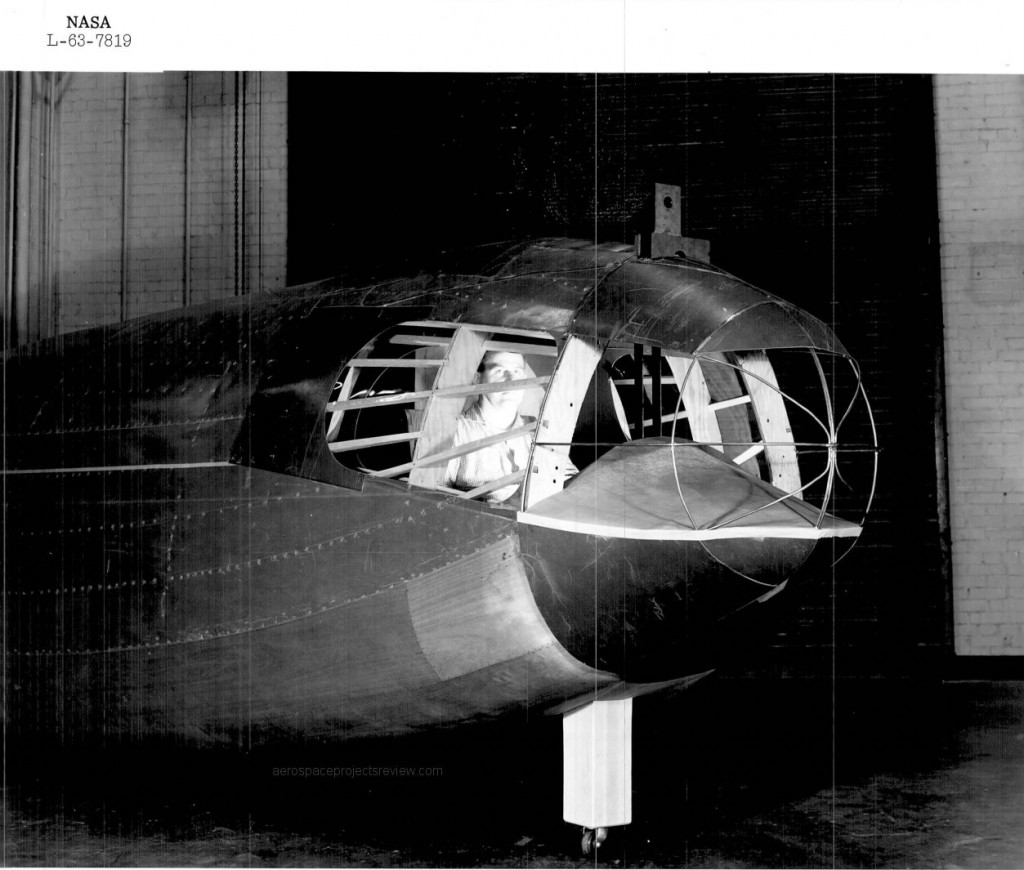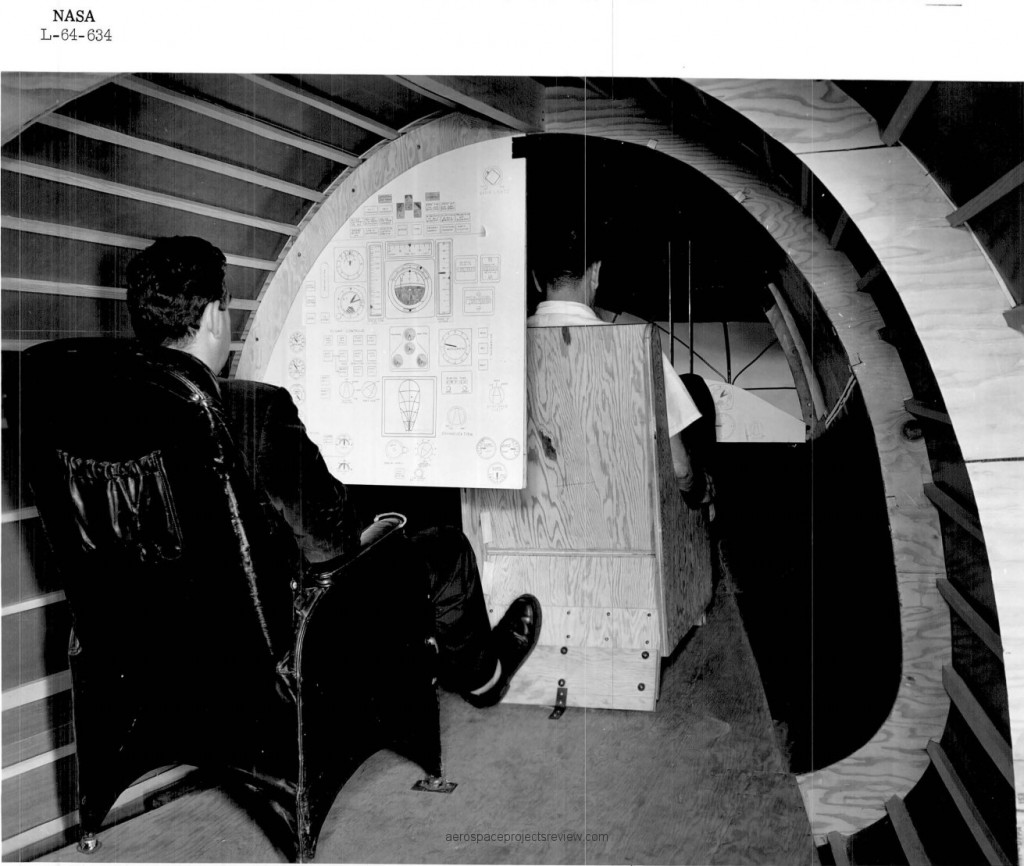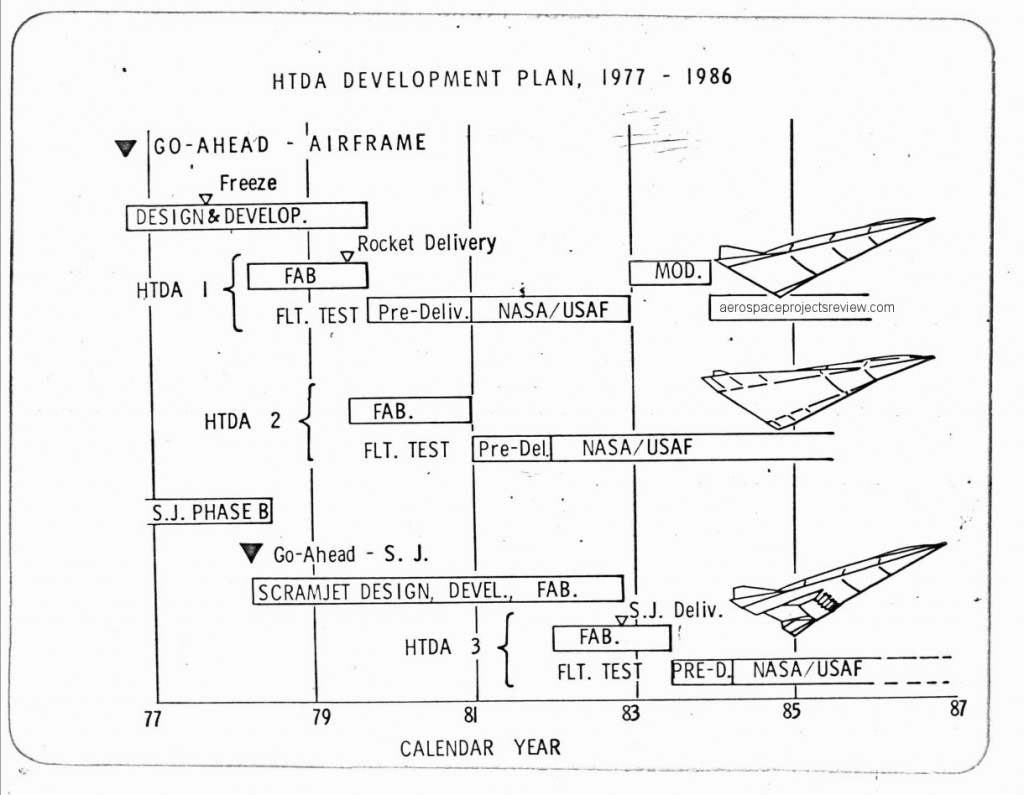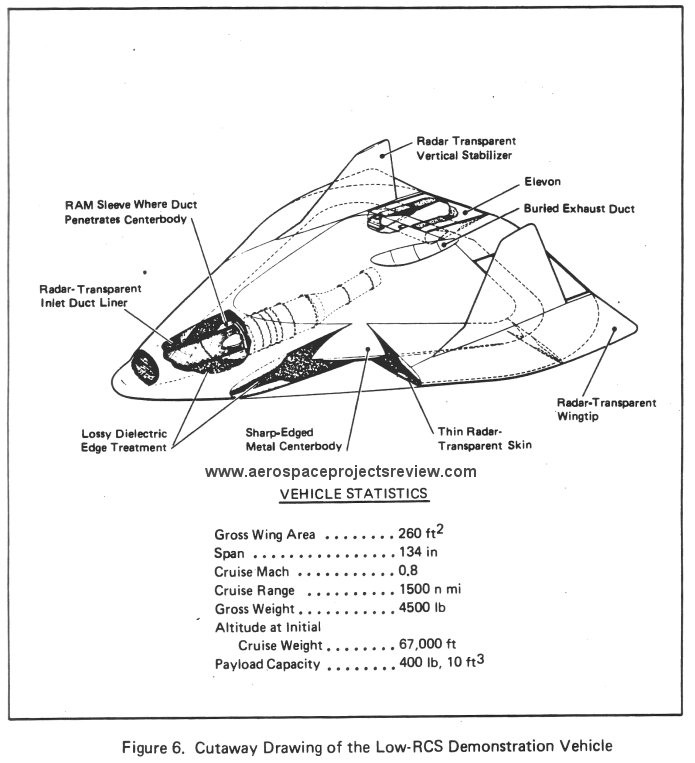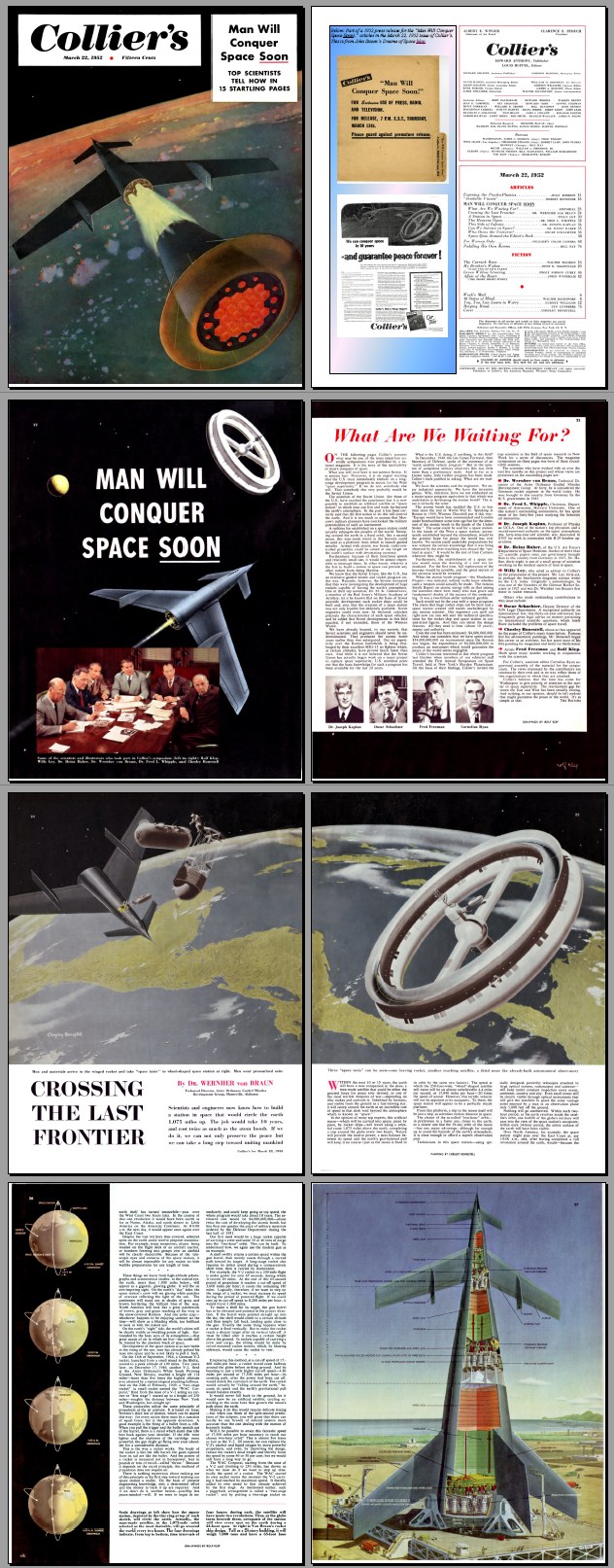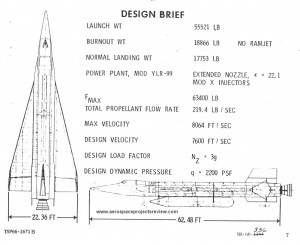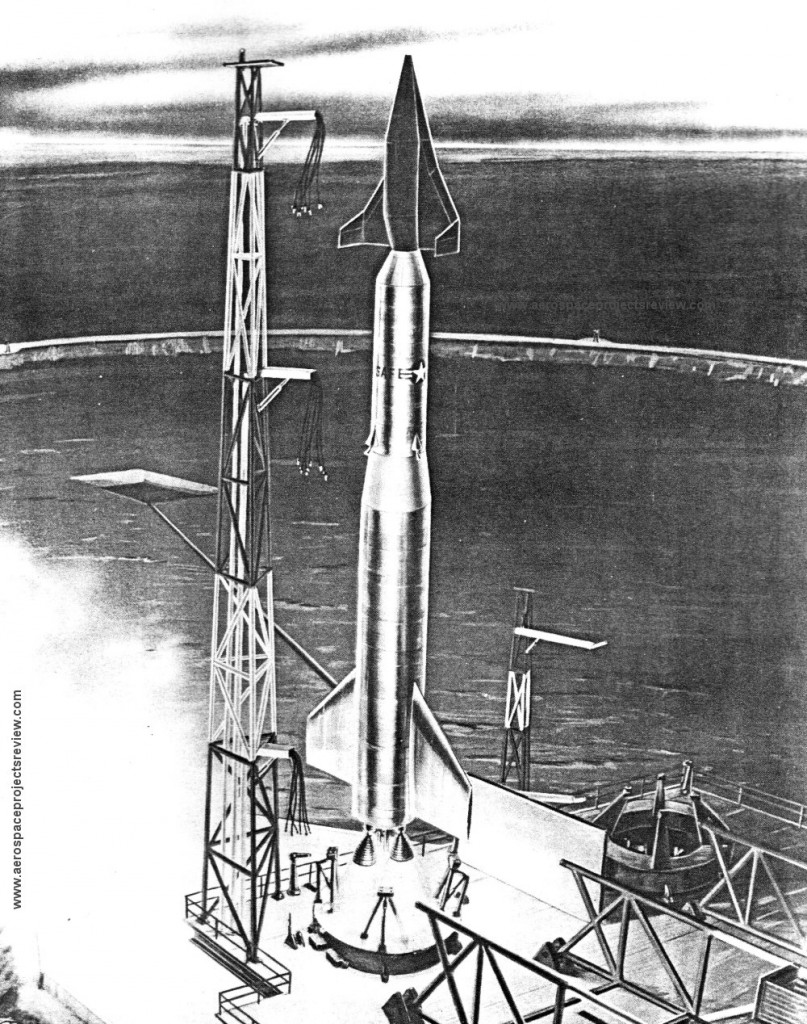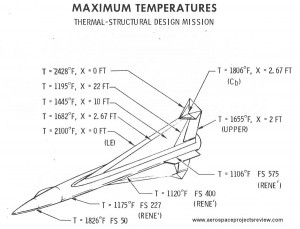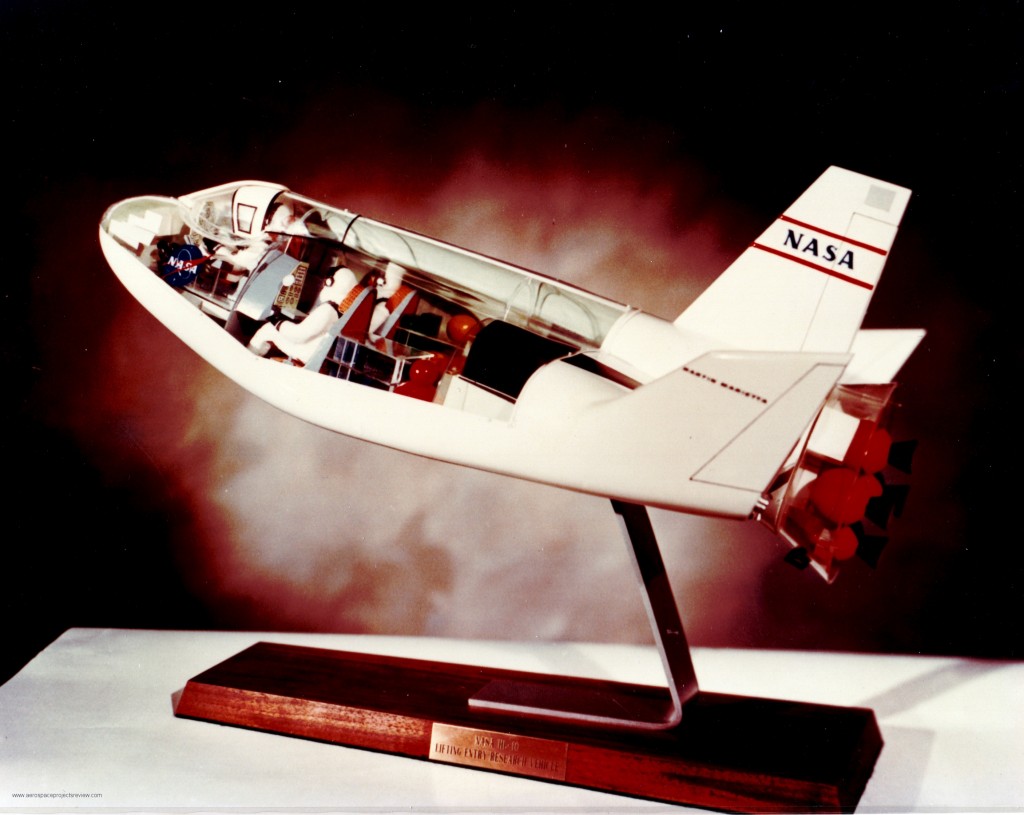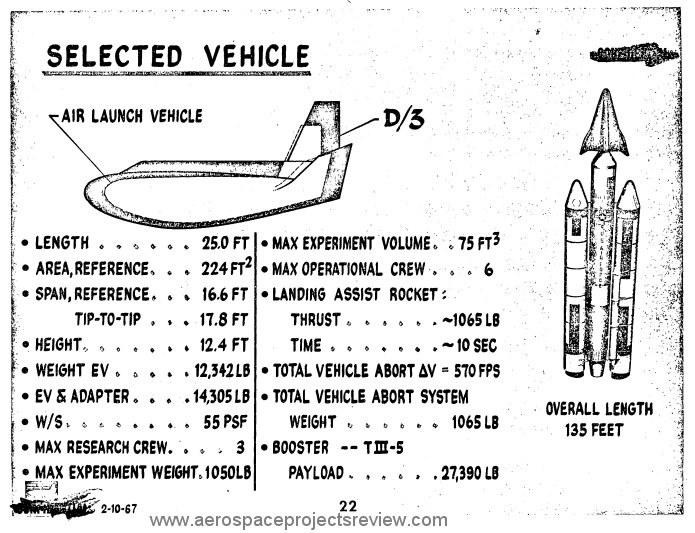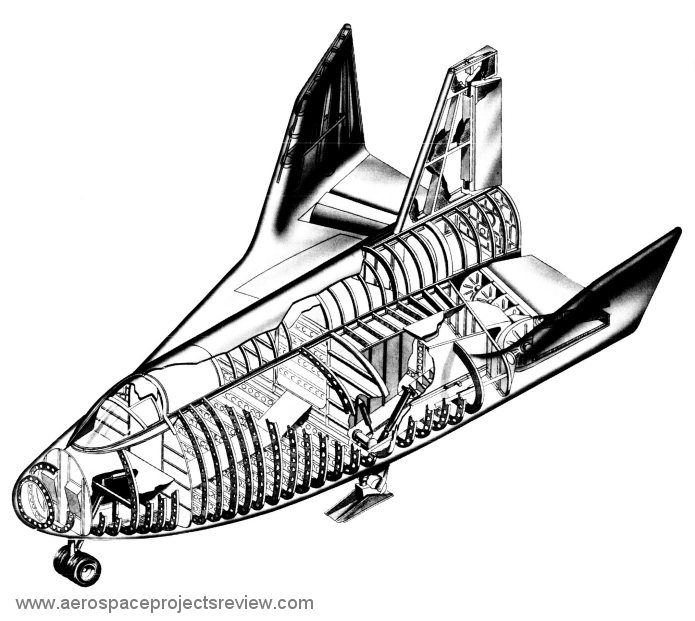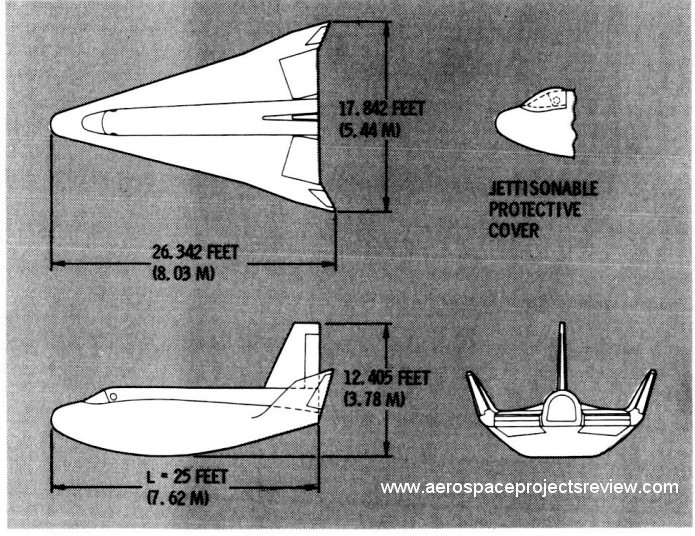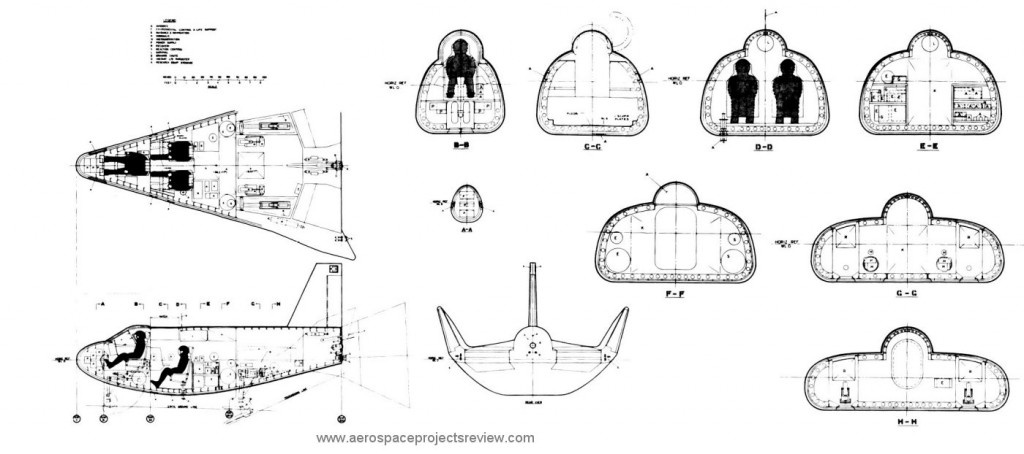A 1954 NACA-Langley concept for a hypersonic research airplane, which eventually led to the X-15. Apart from the X-tail and the use of three rocket engines, the configuration is remarkably similar to the X-15 in general terms.
This one, based on the same crude mockup, moved the pilot lower. It is much more like the HL-10 as actually built, with no disruptions to the basic lifting body mold line. It does have a quite different window arrangement, however.
Curiously, it seems that seating for more crew than just the pilot was considered. This indicates that this planning wasn’t just for a purely research vehicle, but an orbital vehicle intended to transport a crew.
A mid-1970’s graphic from the collection of a former NASA-Langley engineer shows the development schedule for “HTDA.” This I think stands for “Hypersonic Technology Development Aircraft,” and was to be a Mach 5+ airbreathing lifting body research plane that looks strikingly like the supposed “Aurora spyplane” that was so popular in the 1990’s. HTDA airframes 1 and 2 were most likely pure rocket vehicles, with a scramjet being integrated onto airframe 3.
A 1974 design by Teledyne Ryan for a stealthy remotely piloted vehicle While the general shape is certainly well within the norm for stealthy craft, the structure itself is quite different: it is basically a metal vehicle optimized for stealth, wrapped in a radar-transparent plastic skin optimized for aerodynamics. The only aspect of it that really seems to fail modern stealthy practices is the apparent straight shot in to the turbine face. From the Jay Miller collection.
The technology behind this was patented by Teledyne Ryan:
Aircraft of low observability
CORRECTION: This was originally posted as a TRW design, when in fact it was a Teledyne Ryan design. D’oh.
Tony Chong has an article up on his blog describing the Northrop N-205 design, a T-38 massively altered into an all-rocket powered vehicle designed to launch itself to the edge of space.
Talons in Space: Northrop’s N-205 Proposal
OK, here’s one of the projects I’ve been working on of late… scanning and repairing the old “Collier’s space series” articles from the early 1950’s for reprinting in the AIAA-Houston section newsletter. As far as I’m aware, this is the first time these have been republished in clear, high-rez and full color format since the original release.
For those unaware, in the early 1950’s Collier’s magazine (similar to “The Saturday Evening Post”) ran a series of articles written by the likes of Willy Ley and Werner von Braun, illustrated by the likes of Chesley Bonestell and Fred Freeman, describing what the future of manned space exploration may look like. Their vision was, to put it mildly, grandiose, and far exceeded what the actual space program became and did… but the impact on the public of these articles helped lead to the space program becoming popular with the public… and the government. The designs that were produced, such as the Ferry Rocket and “Wheel” space stations, are comfortably described as “iconic.”
The July/August 2012 issue of AIAA-Houston Horizons reprints the complete first Collier’s article from March 22, 1952. The original magazine layout included numerous ads and extraneous bits that were edited out of this reprint, and in several cases replaced with “Mini-APR” articles, several of which tie directly into the Collier’s series. This first article includes about 30 pages of the original Collier’s stuff. Future issues of Horizons will carry the complete set of Collier’s article,s including the Moon exploration and Mars exploration articles.
As always, Horizons is a free-to-download PDF. New for this issue, it is available in both high and low resolution.
Feel free to spread the word about this. The more it is downloaded from the AIAA site, the more interest is shown in it, the more might be done with this in the future.
A reproduction of admittedly dismal quality of a Martin Co. painting of their December 1958 Dyna Soar configuration at launch. This configuration, the product of a team-up of Martin and Bell, competed against Boeing (and other companies) and lost; what must have been grating for the Martin-Bell folks was that the Boeing design that won looked nothing like the final Dyna Soar design… which actually looked a whole lot like this vehicle.
The Dyna Soar is here being shown launched by a modified Titan I ICBM. This booster would have fallen far short of orbiting the Dyna Soar; instead it would have simply tossed it on a long hypersonic suborbital trajectory. This would have been a purely experimental aircraft, the natural follow-on to the X-15.
From the NASA HQ history office, a photo of a Martin Marietta model of the HL-10. The ID plaque on the base of the model reads “NASA HL-10 LIFTING ENTRY RESEARCH VEHICLE,” but the interior clearly shows that this design was intended for transportation of crew, and possibly cargo, to space.
This most likely dates from around 1967, when Martin was studying HL-10-type orbital craft for NASA. This appears to be the “D/3” configuration, one of a fairly large number of HL-10-based designs. The D/3 was capable of carrying three crew (up to six) and would be launched atop a Titan IIIc launch vehicle.
